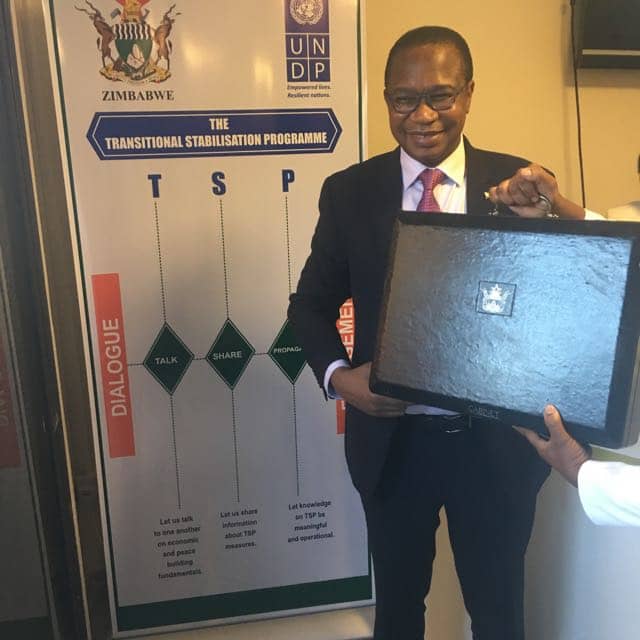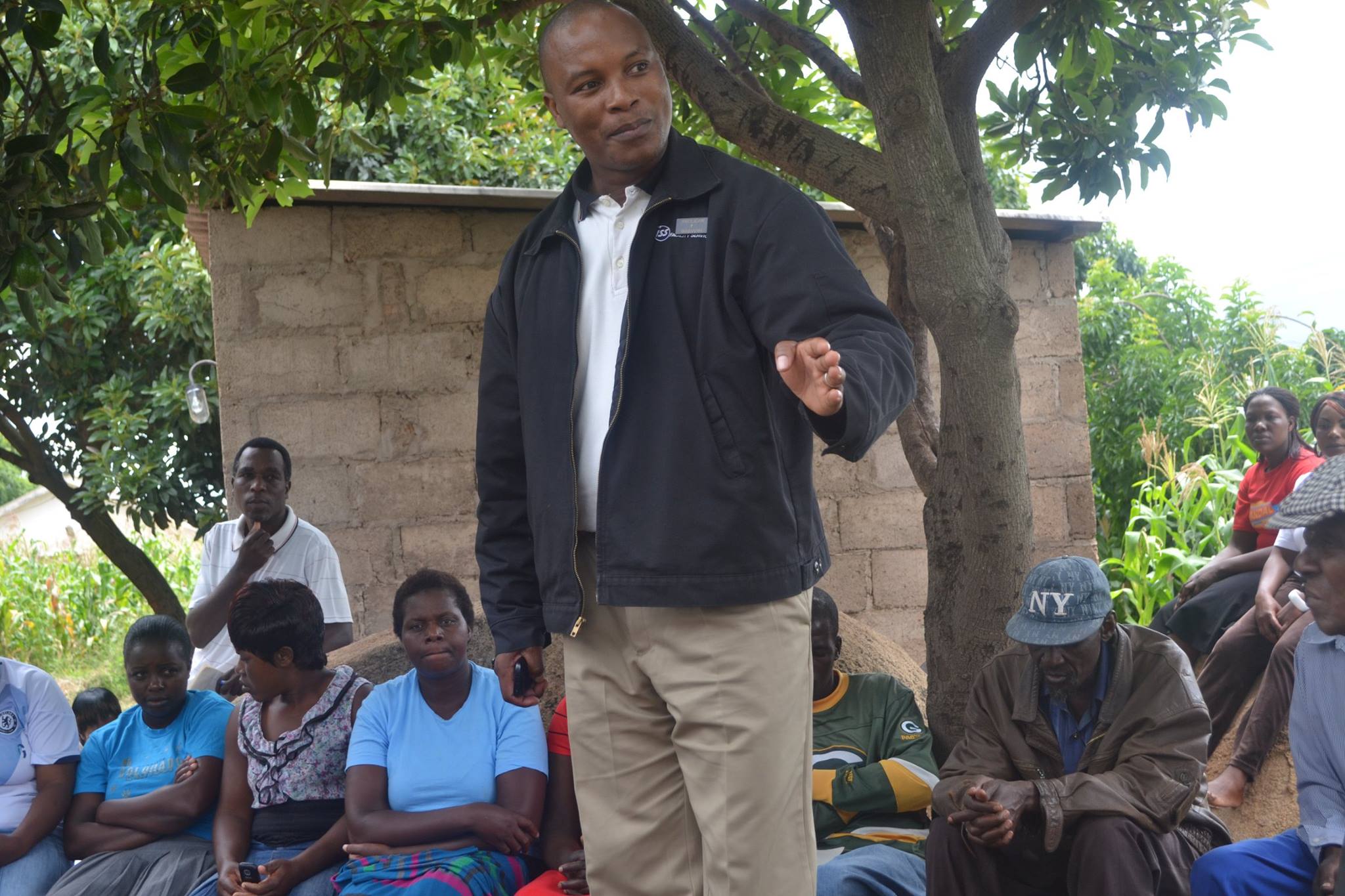|
Getting your Trinity Audio player ready...
|
By Persistence Gwanyanya
While the $4,5 trillion budget might have given a great deal of consideration to the urgent need to balance growth and stability, its implementation remains key.
Given the structural nature of our challenges, I never expected a silver bullet type of budget that addresses all of them.
Economic rebuilding is a journey and cannot be achieved overnight.
What will make a difference in this journey is getting the basics and priorities of economic rebuilding right?
Though the multiple currency system is now entrenched into law for the next five years, the announcement of a Zimbabwe dollar budget is a clear demonstration of the Government’s commitment towards de-dollarisation.
While dollarisation seems a popular option today, it has never been the optimal currency choice.
By its nature, dollarisation has short-term benefits, which may not be sustainable in the long term.
Therefore, it is currently not a viable option for Zimbabwe.
Meanwhile, the multiple currency regime is necessary to nurture confidence, against the backdrop of hyperinflation experience and losses incurred at currency reforms.
While some sections of the market have been calling for a more radical shift towards Zimbabwe dollar preference — the Russian style — Treasury has chosen a more careful approach to de-dollarisation, where payments to mainly key contractors are split between Zimbabwe dollars and United States dollars, to manage currency volatilities arising from lumpy local currency payments.
To support this payment structure, Treasury advised that it is arranging a US$400 million facility from Afreximbank mainly to finance the completion of infrastructure projects.
Going forward, the decision to tone down the aggression on new infrastructure projects is commendable as it is supportive of durable stability.
However, on the other hand, it is advisable for Treasury to continuously review its preference for the Zimbabwe dollar by pivoting towards more local currency-denominated duties and taxes.
This is also necessary to restore confidence in the local unit.
While we have gotten the basics of achievement of stability right by containing the budget deficit within acceptable levels of less than 3 percent since 2019, it boggles the mind why instability has remained over that period.
The doubling of the budget from $2 trillion to $4,5 trillion is a clear sign of instability, arising from the estimated average inflation of 167 percent in 2022.
Clearly, stability is beyond fiscal balance.
It is partly attributable to structural challenges we face as an economy, which include a high level of informality, de-industrialisation, unemployment, consumption and confidence crisis.
The economic reforms that we embarked on in October 2018, encapsulated under Vision 2030, are essentially meant to address these challenges, hence the budget should be analysed within the reform context.
Despite the near-balanced budget, characterised by a budget deficit of 0,61 percent in 2022 and 1,5 percent in 2023, injudicious management of cash flow can spin the market out of control.
This is why it is important for Treasury to strengthen the value-for-money audits currently under implementation.
Suffice it to mention that the worries about the destabilising effects of delayed payments to contractors by the Government will be put to rest when Government starts implementing the measure to settle invoices within 30 days from the date of invoice.
In this connection, Treasury is advised to expeditiously resolve and settle outstanding invoices affected by value-for-money audits.
As expected, and much to the delight of the market, Treasury reviewed down the intermediated money transfer tax (IMTT) for domestic foreign currency transactions to the same level as the Zimbabwe dollar IMTT of 2 percent with effect from January 1, 2023.
This is expected to encourage the flow of forex into the formal system.
Importantly, by making this adjustment, Treasury is acknowledging the legality of the multiple currency system, which instils market confidence.
Sustained growth is seen as a precondition to the achievement of durable stability and welfare improvement.
Geopolitical factors as well as domestic peculiarities will continue to shape growth in 2023 and beyond.
Owing to the announced measures, the Treasury projects growth of 3,8 percent in 2023, which is above average global and Southern Africa growth of 2,7 and 3,7 percent respectively.
The commitment to target monthly inflation of 1-3 percent is also expected to support growth in 2023.
We expect the Reserve Bank of Zimbabwe (RBZ) Monetary Policy Committee to deliberate more on stability measures when it sits on December 2.
It is important to emphasise the need to capitalise on the firming global commodities prices, which have so far supported growth of the mining sector.
The mining sector growth of 10 percent in 2022 is expected to extend to 10,4 percent in 2023.
Though mineral prices are expected to soften in 2023, they are forecast to remain above the pre-crisis levels and we cannot miss this opportunity.
Investment in the mining sector so far is encouraging, and it is comforting to note that Treasury is convinced about the need to continue incentivising exploration and mining activities while guarding against the risk of loss of value from illegal mining activities, especially for lithium.
Zimbabwe is experiencing increased demand for lithium, the platinum group of minerals, chrome, coal, nickel, diamonds and gold, among other minerals, which will go a long way in supporting the mining sector economy of US$12 billion by 2023.
Consistent with the need to tone down infrastructure projects, the construction sector is projected to grow slower to 5,8 percent from the 2022 growth of 10,5 percent.
As indicated earlier, Treasury is pinning its hopes on the Afreximbank facility being arranged to support infrastructure development.
Arguably, there is increasing real estate activity as shown by the 4,6 percent and 3,7 percent growth in the sector in 2022 and 2023, respectively.
This could be an indication of confidence in the future prospects of the country.
Though Treasury is projecting recovery of agriculture from a contraction of 14,1 percent in 2022 to growth of 4 percent in 2023, it seems there is more work to be done to achieve this target.
Commendably, the Pfumvudza/lntwasa programme is progressing well, with about 900 000 vulnerable households expected to benefit from it.
At a targeted hectarage of 845 000 ha, and with a budget of $77 billion, the scheme is our major hope for the sector as the National Enhanced Agriculture Productivity Scheme, being spearheaded by CBZ (High Yield) and AFC, are progressing slowly.
High input costs are making it very difficult, especially for maize farmers, to go back to the field this year.
Like in the past, one would have expected Treasury to consider back pay for maize deliveries made to the Grain Marketing Board (GMB) as the pricing model for the grain was less viable compared to wheat, for example.
Wheat production was very good this year and the country is actually expecting to export some hard wheat to be able to import the soft wheat needed to blend our wheat for the production of bread.
The recovery of the tourism sector following the opening up of the economy after the Covid-19 pandemic, supported by fiscal incentives, will continue driving this sector.
After growing by 56 percent in 2022, the tourism sector is expected to grow by 10 percent in 2023, and it appears there is huge scope for growth going forward.
It appears Treasury has answered the calls to prioritise the social service delivery system by allocating significant amounts of resources towards healthcare and education.
Though the $473,75 billion allocated to healthcare fall short of the Abuja Declaration level of 15 percent, the country has been receiving significant support in the form of developmental assistance towards this sector.
The country is expecting US$212,9 million worth of developmental support in 2023 after having received a total of US$408,3 million so far.
Our healthcare system requires more than Government support, and the call for private sector partnerships with the Government in health service delivery is in good order.
Similarly, our education system needs urgent attention after being affected by the Covid-19 pandemic.
Clearly, at $631,27 billion in 2023, the budgetary allocation is inadequate to meet the pressing requirements of this sector.
Continued support from developmental partners is necessary in view of budget constraints.
While the allocation of $50,4 billion towards social protection looks small, allocations to ministries cater for the vulnerable in different ways.
A typical example is the Pfumvudza/Intwasa programme, which is expected to support 900 000 households, including 300 000 vulnerable households in urban areas.
As the country emerges from Covid-19, there is more work to do to improve our education system.
The increased allocation for public sector wages from 42,3 to 52,4 percent is expected to boost the morale of civil servants, which is key to increased productivity.
The upward review of the Zimbabwe dollar taxable income to $900 000, as well as the increase in the maximum tax threshold after which tax of 45 percent will apply to $12 million, effective January 1, 2023, will provide relief to employees.
At 52,4 percent, employment costs are well within acceptable levels of 60 percent of budget and a significant improvement from 90 percent before economic reforms, prior to 2018.
The performance of the manufacturing sector sums up Zimbabwe’s economic challenges today.
The estimated and projected growth rates of 2,6 percent and 2,5 percent in 2022 and 2023, respectively, only demonstrate the urgent need for Zimbabwe to come up with a sound industrial policy.
Commendably, Treasury has been incentivising the sector, with a tax exemption for the importation of capital goods, and incentives for special economic zones, among others.
The RBZ has deliberately maintained a tier interest rate policy that favours the manufacturing sector.
It is comforting to note that Treasury is urging RBZ to continuously review its foreign currency surrender system, presumably to support the manufacturing sector, among other objectives.
It is commendable that following the lapse of the duty-free measure on basic commodities, Treasury chose not to extend this benefit.
This is necessary to support the local industry and accelerate the re-industrialisation pace.
It is important to note that the duty-free measure was put in place to support ordinary citizens from possible price increases and shortages of basic commodities on account of geopolitical factors, mainly Covid-19 and the Ukraine war.
Manufacturing sector growth shall be supported by investment in steel manufacturing.
The massive steel projects by Disco are expected to meet the country’s requirements, with some products expected to be exported.
Steel is the fulcrum of industrialisation.
Also comforting is that there is an investment in electricity generation capacity, which is necessary to support the value addition and beneficiation imperatives.
We are expecting an additional 300 MW to be generated at Hwange Unit 7 before the end of the year and another 300 MW in the second half of next year.
Treasury had to balance between the need for low taxes to attract investment and the need to collect more taxes to meet the pressing needs of the country in the face of a narrow tax base.
The increase in VAT to 15 percent from 14,5 percent in the face of a reduction in forex IMTT on domestic transactions is unsurprising.
Similarly, the hike in interest on overdue tax obligations to bank policy rate, currently at 200 percent from 25 percent, is unsurprising.
Unlike the expectations of many market analysts, the coming harmonised elections are only expected to take up $76 billion from the budget.
Going into 2023, judicious management of the country’s resources will be key.
No matter what amount is going to be spent, it should be at the right price.
The right price will not afford the beneficiary the flexibility of participating in the alternative market.
While the growth of 3,8 percent looks achievable, there are significant downside risks from mainly geopolitical factors and the threat from climate change, which may militate against its achievements.
Clearly, we have not yet arrived as a country, but we can confirm that we are in the right direction.
Persistence Gwanyanya is the vision consultant of Bullion Group and a member of the RBZ Monetary Policy Committee. Feedback: +263 773 030 691.






